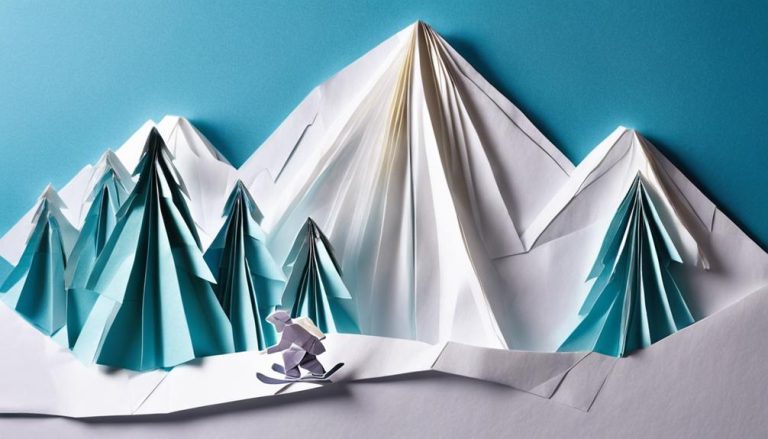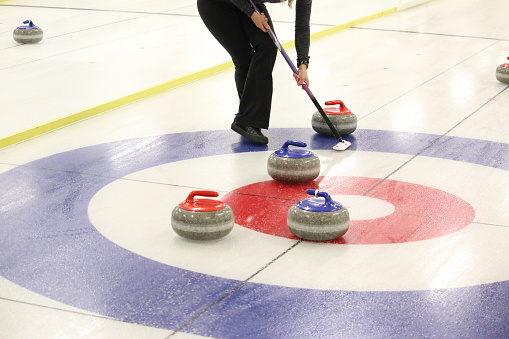General Rules of Slopestyle Skiing
As a slopestyle skier, you know that each feature on the course is like a puzzle piece waiting to be solved. But do you truly understand all the intricate rules and guidelines that govern this exhilarating sport? From the required safety gear to the complexity of trick execution, there are crucial elements to consider if you aim to master the art of slopestyle skiing. Want to unlock the secrets behind successful runs and impressive scores?
Safety Gear Requirements
When participating in slopestyle skiing, wearing proper safety gear is a crucial aspect of ensuring your well-being on the course. Safety gear serves as a shield against potential injuries that can occur during your runs. The importance of selecting the right safety gear cannot be overstated. It is not just about having the gear on; it needs to fit properly to be effective.
Your helmet is a non-negotiable piece of safety gear. It should fit snugly on your head without being too tight. Goggles are essential to protect your eyes from wind, snow, and debris. Ensure they fit comfortably and securely over your helmet. Wrist guards are vital in preventing injuries during falls, so make sure they are the right size to provide maximum protection.
Properly fitting safety gear can make a significant difference in your performance and safety on the slopestyle course. Take the time to adjust and test your gear before hitting the slopes to ensure you can focus on your runs without worrying about equipment malfunctions.
Scoring System Overview
Understanding the scoring system in slopestyle skiing is crucial for competitors aiming to achieve success in this dynamic and challenging discipline. The scoring system analysis is based on several key factors that judges consider when evaluating a skier's performance:
- Trick Difficulty: The complexity and technicality of the tricks performed play a significant role in determining the score. Judges assess the level of difficulty of each trick executed by the skier.
- Execution and Style: The finesse, fluidity, and overall style in which the tricks are performed are also crucial. Clean landings, smooth transitions, and creativity all contribute to a higher score.
- Trick Progression Assessment: Judges analyze the progression of tricks throughout the run. Skiers are rewarded for showcasing a variety of tricks, including different rotations, grabs, and flips, demonstrating versatility and skill.
Course Layout and Features
As you prepare to explore the course layout and features of slopestyle skiing, understanding the various jump types and rail sections is crucial. Jump types typically encompass elements like kickers, tabletops, and hips, each demanding specific techniques and skills from the skier. Rail sections offer a diverse range of challenges, with features such as flat rails, rainbow rails, and wallrides testing a competitor's creativity and adaptability on the course.
Jump Types
Differentiating themselves from traditional ski jumps, slopestyle skiing courses feature a variety of jump types designed to challenge and showcase the athletes' skills. When navigating these jumps, consider the following:
- Landing Techniques and Takeoff Strategies: Each jump type requires a specific approach for takeoff and landing. Understanding the trajectory and speed needed is crucial for a successful jump.
- Grab Variations and Rotation Combinations: To impress judges and spectators, mastering grab variations and rotation combinations is essential. Experimenting with different grabs and spins can elevate your performance on the slopes.
- Jump Sizes and Distances: Slopestyle courses offer jumps of varying sizes and distances. Adapting your skills to these differences is key to maintaining a fluid and dynamic run.
Navigating these features with finesse and expertise will set you apart in the world of slopestyle skiing.
Rail Sections
When progressing from jump types to rail sections in slopestyle skiing, focus shifts to navigating intricate course layouts and features that challenge skiers' precision and versatility. Rail sections in slopestyle courses present a balance challenge that tests your technical precision. These sections often consist of various rail types, such as straight rails, kinks, rainbow rails, or boxes, each requiring specific techniques to maneuver effectively. Skiers must demonstrate creativity in their line choice to showcase their skills while maintaining precise control over their speed. The ability to seamlessly transition between different rail features highlights a skier's adaptability and proficiency in handling diverse obstacles. Successfully mastering rail sections not only requires technical prowess but also a keen eye for innovative approaches to navigating these challenging elements in the course.
Trick Execution Guidelines
How can skiers ensure precise execution of tricks in slopestyle competitions? To achieve flawless trick execution, consider the following guidelines:
- Commitment: Make sure to fully commit to the trick once initiated. Confidence in your abilities is key to executing tricks with precision. Focus on the task at hand and trust your training and skills.
- Body Positioning: Pay close attention to your body positioning throughout the trick. Maintain a balanced and controlled posture to ensure stability and accuracy. Proper alignment can help you land smoothly and maintain control.
- Timing: Timing is crucial in executing tricks effectively. Coordinate your movements with precision, especially when it comes to jump height and rotation speed. Understanding the timing required for each trick will help you perform them with finesse.
Judging Criteria Breakdown
When it comes to judging slopestyle skiing, understanding the scoring system is crucial. Evaluating trick difficulty plays a significant role in determining an athlete's score. The ability to break down these points accurately is essential for fair and accurate judging.
Scoring System Explanation
The scoring system in slopestyle skiing is based on a combination of judges' evaluations of various elements performed by the skier. To understand how scores are calculated, consider the following:
- Scoring Breakdown: Judges assess skiers based on multiple factors like execution, amplitude, difficulty, and style. Each of these components contributes to the final score given to the skier.
- Trick Variety: Skiers are rewarded for showcasing a wide array of tricks throughout their run. The more diverse and technically challenging the tricks are, the higher the score they receive.
- Overall Performance: Judges also consider how well the skier links different tricks together, the flow of the run, and overall creativity. A seamless and innovative performance can significantly impact the final score.
Trick Difficulty Evaluation
Judges in slopestyle skiing meticulously evaluate the trick difficulty displayed by skiers as a crucial component of their overall performance assessment. Trick progression evaluation is key, where judges analyze the sequence and complexity of tricks performed. Risk assessment analysis also plays a vital role, considering the danger involved in executing each trick. Style points assessment focuses on the skier's unique flair and creativity in trick execution. Difficulty level judgment considers the technicality and skill required to perform the tricks. By combining these factors, judges can fairly evaluate the trick difficulty and reward skiers accordingly. Here's a breakdown:
| Trick Progression Evaluation | Risk Assessment Analysis | Style Points Assessment |
|---|---|---|
| Analyzing sequence and complexity of tricks | Considering danger involved in the tricks | Evaluating skier's unique flair and creativity |
Competition Etiquette and Tips
Competitors should prioritize smooth transitions and controlled landings to impress the judges during slopestyle skiing competitions. To excel in these events, consider the following tips:
- Maintain Flow: Focus on maintaining a consistent flow throughout your run. Smooth transitions between tricks not only demonstrate skill but also make your performance more aesthetically pleasing.
- Landings: Ensure you stick your landings cleanly. Judges look for controlled and stable landings after executing each trick. Sloppy landings can result in point deductions.
- Adapt to Conditions: Be prepared to adapt to changing weather conditions and course layouts. Flexibility and the ability to adjust your run on the fly can set you apart from the competition.
Frequently Asked Questions
What Are Some Common Injuries That Slopestyle Skiers May Experience and How Can They Be Prevented?
To prevent common injuries in slopestyle skiing, focus on proper training techniques like strength and flexibility. Be mindful of weather conditions and ensure safe spectator attendance. Stay alert, practice caution, and prioritize injury prevention for a successful skiing experience.
How Do Weather Conditions Impact a Slopestyle Skiing Competition and What Measures Are Taken to Ensure Safety?
When considering weather conditions for slopestyle skiing, factors like wind and snow conditions play a crucial role. Safety measures, such as course adjustments, delays, or even event cancellations, are implemented to ensure athlete well-being during competitions.
Can Spectators Attend Slopestyle Skiing Competitions and What Are Some Tips for Watching the Event Live?
For the ultimate spectator experience at slopestyle skiing competitions, seek the best viewing spots to soak in the event atmosphere. Plan ahead for event logistics like parking and amenities to maximize your enjoyment.
Are There Any Specific Training Techniques or Exercises That Slopestyle Skiers Can Do to Improve Their Performance?
To boost your slopestyle skiing prowess, focus on strength training like squats and deadlifts, and flexibility drills. Enhance performance with proper nutrition and effective recovery strategies. Consistency in training and smart recovery is key.
How Do Slopestyle Skiers Prepare Mentally for Competitions and What Strategies Do They Use to Stay Focused During Their Runs?
Want to know how slopestyle skiers mentally prep for competitions? Visualizing every trick, focusing on breathing techniques, and setting specific goals help them stay sharp during runs. It's all about mental fortitude on the slopes.






